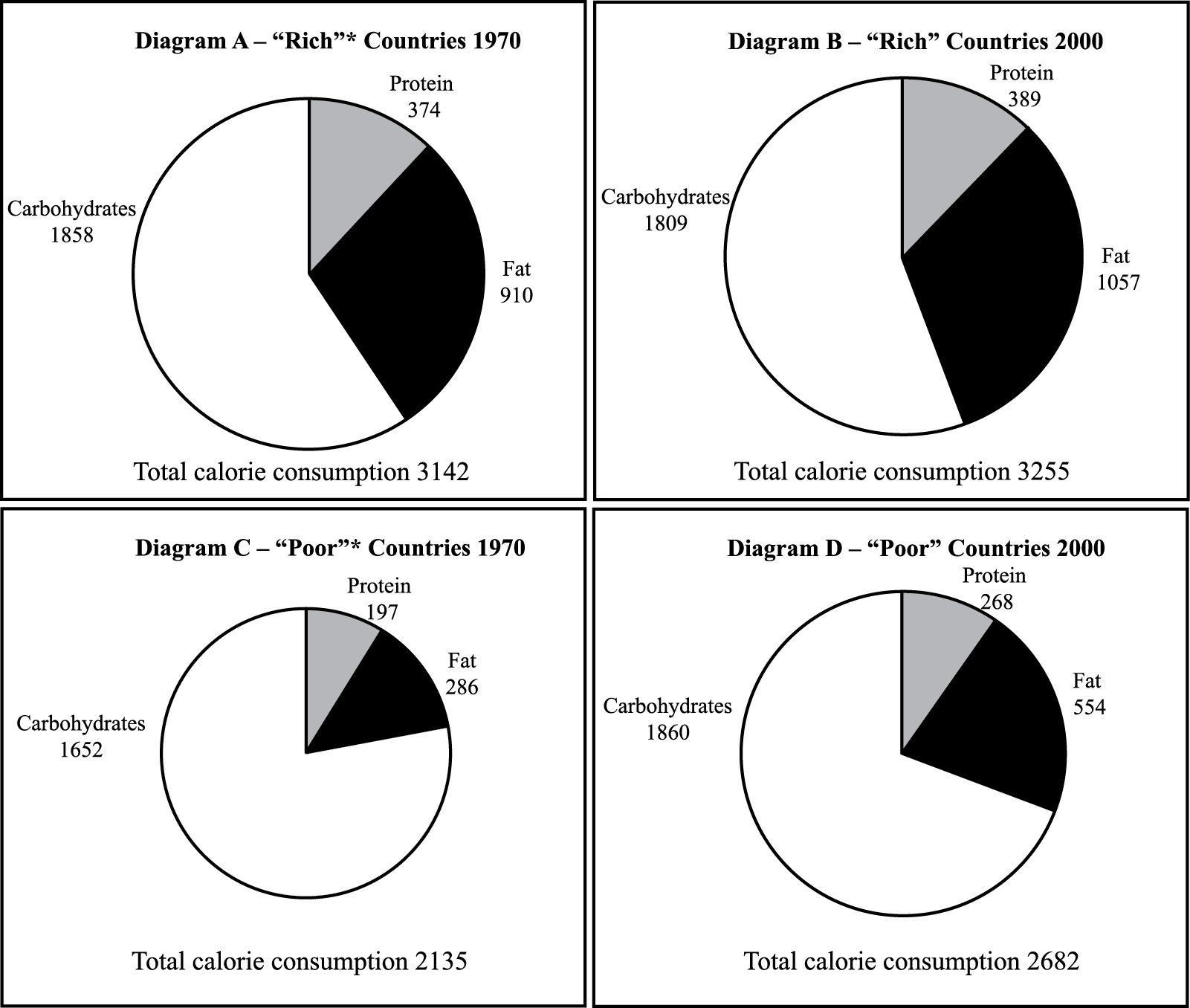| Date | Marks available | 2 | Reference code | .2.bp.12 | |
| Level | SL and HL | Paper | 2 | Time zone | |
| Command term | Outline | Question number | 12 | Adapted from | N/A |
Question
The diagrams show the average daily consumption of calories per person.

[Source: FAO Statistics Division]
* Rich and Poor countries according to FAO classification
Outline two changes in calorie consumption in poor countries from 1970 to 2000.
Outline two differences between calorie consumption in rich countries and poor countries in 2000.
Explain why food availability has increased in some areas of the world.
Evaluate the sustainability of modern agricultural systems.
Markscheme
The diagrams show that total calorie consumption has increased [1 mark] and in particular more calories are derived from fats and protein, fewer calories from carbohydrates [1 mark]. Accept other valid changes.
Some quantification is required for full marks.
Total calorie consumption of rich countries is greater [1 mark] and carbohydrate consumption in poor countries is greater than in rich countries [1 mark]. Accept other valid changes.
Some quantification is required for full marks.
Food availability is dependent upon supplies from domestic production, commercial imports and donors. Food is available if it is in easy reach of consumers and this depends upon access as well as yield. The availability of food has been enhanced through technological progress and increasing agricultural knowledge, both of which have boosted production. Favourable taxing and tariff policies, trading and efficient transport systems have also allowed the effective movement of food from source to point consumption.
Answers which focus only upon food production should be awarded a maximum of 3 marks.
Most modern agricultural systems are designed to maximize production through economies of scale, the use of technology and agribusiness. These changes have increased yields, but often at an environmental and social cost. Environmental problems may include soil contamination, soil degradation, eutrophication of watercourses, increased atmospheric methane, energy subsidies, inhumane practices. Associated with this have been agricultural unemployment, outward migration from rural areas and rapid urban growth. Overexploitation of resources and environmental damage are consequences of modern agriculture, which are unsustainable. Some candidates may argue that some modern agricultural systems, including organic farming, have made agriculture more sustainable. Either approach is equally valid and can receive full marks.
Answers which identify, explain and evaluate the sustainability of agricultural practices may access bands E and F.
Marks should be allocated according to the markbands.

